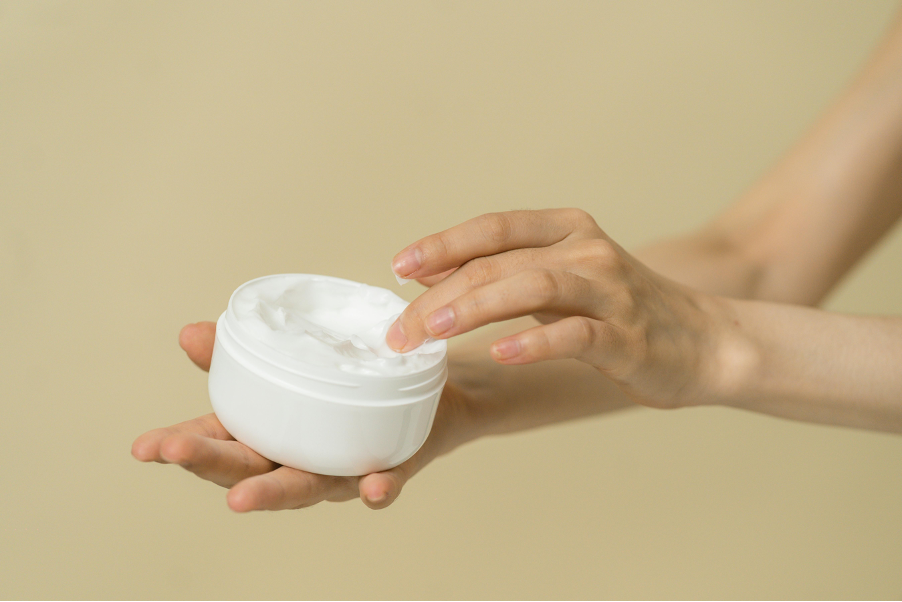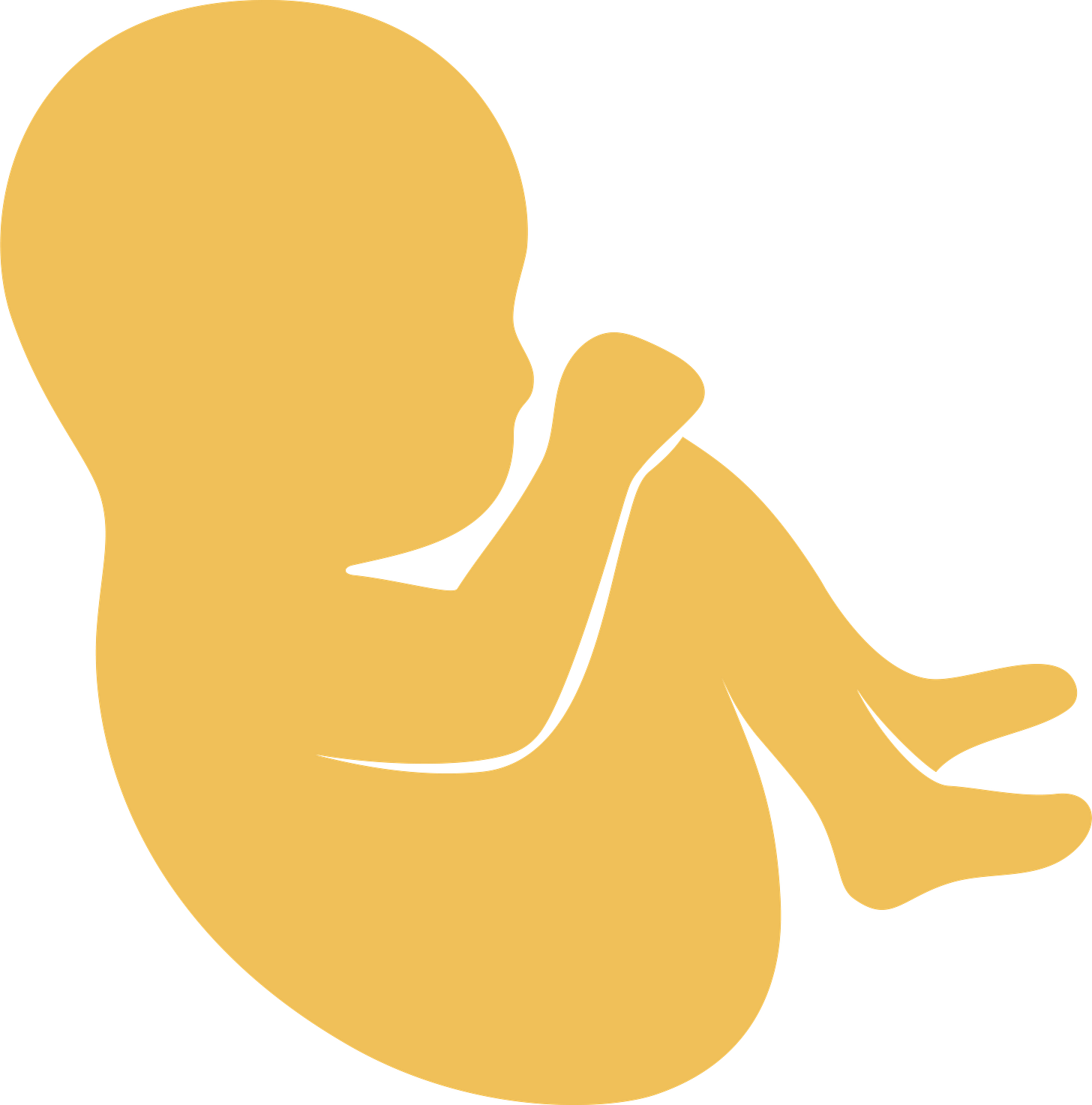More Than Skin Deep
The generational trickle-down effect of EDCs from mother to child.
Inside This Issue
How EDCs affect not just conception, but pregnancy, baby biology and even grandkids
Why these hormone-disrupting chemicals cross the placenta and show up in breast milk
The overlooked science of skin absorption, layering and low-dose accumulation
A practical audit to clean up your bathroom cabinet, plus what ingredients to look out for
A gentle reminder that reducing the dose lightens the load, for your body, your baby and the planet
Last time, we looked at how personal care products could affect your reproductive health and ability to conceive.
Here it is if you missed it:
The Lingering Effects of EDCs
As we covered in the last issue, endocrine disruptors impair ovulation and sperm development, with wider ripple effects across reproductive health. They’ve been linked to menstrual irregularities, PCOS, endometriosis, uterine fibroids, testicular disorders, low testosterone and hormone-related cancers including breast, testicular and ovarian.
But after conception, these chemicals don’t stop outside the cells of the rapidly dividing zygote: the fertilised egg.
They can also alter the course of a pregnancy, with research consistently linking EDC exposure to higher risks of miscarriage, preterm birth, low birth weight, small-for-gestational-age infants, placental dysfunction and gestational diabetes.
EDCs are lipophilic, meaning they’re fat lovers, and like to store themselves in fatty tissues. Why? Because our bodies haven’t evolved to figure out how these Johnny-come-latelies should be cleared.
They’re intrepid travellers too, crossing the placenta and entering the developing fetus via the umbilical cord.
Not only do we have evidence that these chemicals are found in meconium (baby’s first poo), but also in breast milk.
Think about that: breast milk is biologically designed to nourish and protect. But that same richness - its fat content - can also serve as a vehicle for toxin transfer. As such, it’s an inadvertent detox. A pump-and-dump, where the mother’s toxic load goes down while the baby’s goes up.
Evolution never saw this coming. Not because evolution got it wrong, but because it never anticipated the chemical soup in which modern life exposes us to.
And all the more reason to consider a preconception detox, because breast milk is gold, and we want to keep it that way.
EDCs Don’t Just Pass Through. They Rewire the Developing Fetus
Once EDCs cross the placenta, they don’t simply pass through. They interact with a developing system that is exquisitely sensitive. Even low doses can alter biology and architecture in ways that influence lifelong health.
Potential outcomes associated with prenatal EDC exposure include:
Altered brain development, particularly in stress reactivity, emotional regulation and attention (including increased risk of ADHD and other neurodevelopmental differences)
Shifts in how metabolism, immunity and hormones are calibrated, often with effects that only emerge later in life
Changes to the timing of puberty, either earlier or later than expected
Some effects are sex-specific.
Prenatal EDC exposure has been associated with:
In females:
Irregular or disrupted menstrual cycles
Increased risk of polycystic ovary syndrome (PCOS) and endometriosis
Shorter anogenital distance, which has been linked to higher endometriosis risk in adulthood
In males:
Reduced sperm count and motility in adulthood
Smaller penis size (unfortunately labelled ‘micropenis’), higher rates of hypospadias (where the opening of the penis is in the wrong place), and undescended testes at birth
Shorter anogenital distance, associated with reduced fertility potential and impaired testosterone signalling
The critical point:
These chemicals don’t just pass through: they reprogram.
A Word About Grandkids
In animal studies, the ripple doesn’t stop with the parent or their child - it reaches the third generation. That means the grandkids, who were never directly exposed, still show the effects.
What have they found in these grand-offspring? Changes in sperm and egg function, disrupted puberty timing, reproductive tract abnormalities and even altered stress and metabolic responses, none of which came from direct exposure.
Are rats humans? No. But we’re not about to test the safety of EDCs by rubbing them on a group of women trying to conceive, following them through pregnancy, and tracking their children’s reproductive health. That would be unethical - and a hard study to recruit for!
So instead, we find ourselves in a kind of global, unintentional trial. Eight billion of us, and for those who can afford it, layered in lotions, serums and fragrance, part of an experiment we didn’t exactly opt into.
Delivered Daily, Just Not in Tablet Form
Personal care is just one source of endocrine-disrupting chemicals. These compounds are also found in:
Food packaging and plastic containers
Household cleaners and flame retardants
Pesticides sprayed on food
Dust, tap water and indoor air
Whether via skin, air, water or food packaging, these chemicals still get into our bodies, just not as pills. If they were pills, many endocrine-disrupting chemicals (EDCs) would never have made it past regulatory approval.
But because they’re considered ‘indirect’ exposures: airborne, trace-level or leached from materials, they’ve slipped through the cracks of chemical regulation. Often, there's a scientific disconnect between presence and effect.
Biology doesn’t make that distinction. A molecule that mimics estrogen is still received as estrogen, no matter how it entered the body.
How Did These Chemicals Get a Free Pass?
Many of these chemicals were grandfathered into use decades ago, long before modern safety testing standards. And unlike pharmaceuticals, which require pre-market evidence, industrial chemicals, including those used in personal care products, don’t need to be proven safe before being widely used.
Yes, skincare products are dermatologically tested, but not for endocrine disruption, and rarely for cumulative or long-term effects after absorption.
Instead of proving safety upfront, regulators tend to act only when enough harm has already been documented. And even then, the bar is high.
Europe has banned over 1,700 ingredients from cosmetics. The US? About 11.
Australia? Somewhere in between, and good luck finding transparent stats.
Do the French, Americans and Australians have different biology? Different science?Or just different systems of accountability?
Watch the Layering: Cumulative Exposure, Compounded Risk
But is there real harm in dabbing on a little moisturiser?
Even small doses of EDCs, applied daily through moisturiser, deodorant, or foundation, can accumulate over time. Especially if you’re layering multiple products or adding heat (think hair dryers, saunas or sun).
And if these chemicals can’t ethically be studied on the general population, let alone pregnant women, their cumulative, synergistic effects certainly aren’t being studied either.
Less In, Less Passed On
You don’t need to (and can’t) eliminate everything. Just reduce the dose. These choices add up, not just in your body, but in the world around you.
Many of these chemicals end up in soil, water and wildlife, disrupting their reproduction too. So every swap you make lightens the load for your hormones, your future child and the planet they’ll inherit.
If you're ready to start somewhere, start with your skin. A few small swaps go a long way, especially when you're using them every day.
Bathroom Cabinet Clean-Out Is the New Pantry Clean-Out
Pick a scanner app and audit your bathroom shelf. Try Yuka, Think Dirty or EWG’s Healthy Living
Start with the products that get the most skin time: moisturisers, deodorants, sunscreens
Then look at what lingers: leave-in treatments, masks, serums
Finally, check the ones that rinse off: cleansers, soaps, scrubs
And if you’re curious about other everyday exposures beyond the bathroom, I’ll be writing more in a future issue on how to bring nature in and escort toxins out.
What to Watch For on the Label
You don’t need to memorise every chemical. Just start recognising the names that come up most often:
Parabens
Mimic estrogen. Disrupt cycles and sperm quality. Look for methyl-, propyl- and butyl-paraben.Phthalates
Interfere with testosterone and ovarian signalling. Often hidden under “fragrance.”Triclosan
Antibacterial. Disrupts thyroid function and the skin microbiome. Found in soaps and acne products.Benzophenones
UV filters like oxybenzone. Cross the placenta. Estrogenic. Found in many sunscreens.Siloxanes
Used for that ‘silky’ feel. Accumulate in fat. Potential endocrine disruptors.Formaldehydes
Slow-releasing preservatives in hair, nail and cleansing products.BHA / BHT
Synthetic antioxidants. Weakly estrogenic. May impact thyroid metabolism.
Till next time…
Warmly, Sonja
If this sparked something for you, tap 🧡 and hit Restack to pass it on.
Thanks for helping thoughtful fertility conversations travel further. 🤍
REFERENCES:
Fudvoye, J., López-Rodríguez, D., Franssen, D., & Parent, A. (2019). Endocrine disrupters and possible contribution to pubertal changes. Best Practice & Research. Clinical Endocrinology & Metabolism, 101300. https://doi.org/10.1016/j.beem.2019.101300
Gaspari, L., Tessier, B., Paris, F., Bergougnoux, A., Hamamah, S., Sultan, C., & Kalfa, N. (2021). Endocrine-disrupting chemicals and disorders of penile development in humans. Sexual Development, 15, 213–228. https://doi.org/10.1159/000517157
Gore, A., Moore, T., Groom, M., & Thompson, L. (2022). Prenatal exposure to an EDC mixture, NeuroMix: Effects on brain, behavior, and stress responsiveness in rats. Toxics, 10. https://doi.org/10.3390/toxics10030122
Hassan, S., Thacharodi, A., Priya, A., Meenatchi, R., Hegde, T., R, T., Nguyen, H., & Pugazhendhi, A. (2023). Endocrine disruptors: Unravelling the link between chemical exposure and women's reproductive health. Environmental Research, 117385. https://doi.org/10.1016/j.envres.2023.117385
Hull, S., Hougaard, K., Toft, G., Petersen, K., Flachs, E., Lindh, C., Ramlau-Hansen, C., Wise, L., Wilcox, A., Liew, Z., Bonde, J., & Tøttenborg, S. (2025). Fetal exposure to a mixture of endocrine-disrupting chemicals and biomarkers of male fecundity: A population-based cohort study. Andrology. https://doi.org/10.1111/andr.70039
Liu, B., Lu, X., Jiang, A., Lv, Y., Zhang, H., & Xu, B. (2023). Influence of maternal endocrine-disrupting chemicals exposure on adverse pregnancy outcomes: A systematic review and meta-analysis. Ecotoxicology and Environmental Safety, 270, 115851. https://doi.org/10.1016/j.ecoenv.2023.115851
López-Rodríguez, D., Aylwin, C., Delli, V., Sevrin, E., Campanile, M., Martin, M., Franssen, D., Gérard, A., Blacher, S., Tirelli, E., Noël, A., Lomniczi, A., & Parent, A. (2021). Multi- and Transgenerational Outcomes of an Exposure to a Mixture of Endocrine-Disrupting Chemicals (EDCs) on Puberty and Maternal Behavior in the Female Rat. Environmental Health Perspectives, 129. https://doi.org/10.1289/EHP8795.
Mitra, T., Gulati, R., Ramachandran, K., Rajiv, R., Enninga, E., Pierret, C., R, S., & Janardhanan, R. (2024). Endocrine-disrupting chemicals: Gestational diabetes and beyond. Diabetology & Metabolic Syndrome, 16. https://doi.org/10.1186/s13098-024-01317-9
Padmanabhan, V., Song, W., & Puttabyatappa, M. (2021). Praegnatio perturbatio: Impact of endocrine-disrupting chemicals. Endocrine Reviews. https://doi.org/10.1210/endrev/bnaa035
Pan, Z., Zhu, F., & Zhou, K. (2021). A systematic review of anogenital distance and gynecological disorders: Endometriosis and polycystic ovary syndrome. Frontiers in Endocrinology, 12. https://doi.org/10.3389/fendo.2021.696879
Paul, J., Calderon, L., Gunier, R., Kogut, K., Harley, K., & Eskenazi, B. (2025). Prenatal residential proximity to endocrine-disrupting agricultural pesticides and menstrual cycle characteristics among Latina adolescents in California. American Journal of Epidemiology. https://doi.org/10.1093/aje/kwaf059
Rodprasert, W., Toppari, J., & Virtanen, H. (2021). Endocrine-disrupting chemicals and reproductive health in boys and men. Frontiers in Endocrinology, 12. https://doi.org/10.3389/fendo.2021.706532
Rutkowska, A., & Diamanti-Kandarakis, E. (2016). Polycystic ovary syndrome and environmental toxins. Fertility and Sterility, 106(4), 948–958. https://doi.org/10.1016/j.fertnstert.2016.08.031
Shen, C., Weng, J., Tsai, J., Su, P., Chou, M., & Wang, S. (2021). Prenatal exposure to endocrine-disrupting chemicals and subsequent brain structure changes revealed by voxel-based morphometry and generalized Q-sampling MRI. International Journal of Environmental Research and Public Health, 18. https://doi.org/10.3390/ijerph18094798
Zhang, H., Li, Y., Zhang, X., Chen, W., Liang, Q., Li, C., Knibbs, L., Huang, C., & Wang, Q. (2022). Potential occupational exposure of parents to endocrine-disrupting chemicals, adverse birth outcomes, and the modification effects of multi-vitamin supplement and infant sex. Ecotoxicology and Environmental Safety, 233, 113314. https://doi.org/10.1016/j.ecoenv.2022.113314








👏🏼👏🏼👏🏼
I got the Yuka app since I read your last article. Bathroom clean out included to my huge surprise.... Almost all my Sukin products (I thought they were clean!!) and even some Antipodes products (even more surprised!). Ordered a bunch of MooGoo, everything from them is clean (provided you aren't vegan that is!).